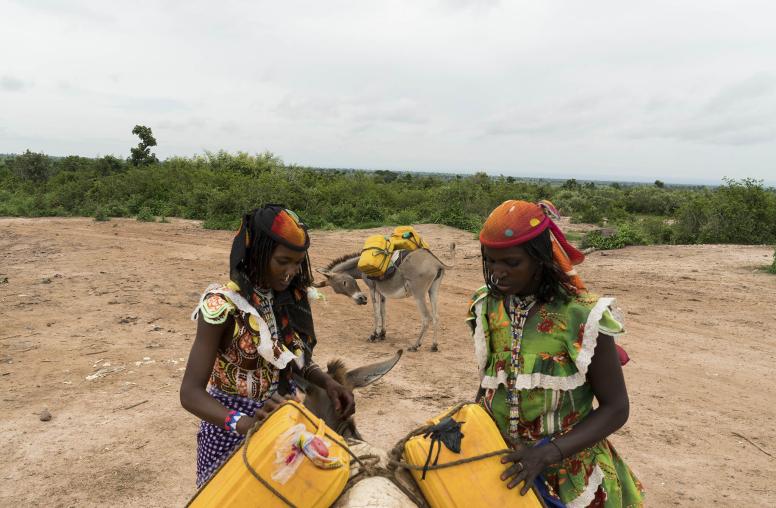Inclusive Approaches to Community Policing and CVE
What happens when community policing—a strategy that promotes collaboration between the police and a community to ensure safety and security—is implemented in transitional societies, in marginalized communities, or to prevent violent extremism or to engage women in providing community-level security? To ensure that they are not doing more harm than good, security, gender, and peacebuilding practitioners must both expand their understanding of policing methodologies and related assumptions and reconcile sometimes competing objectives.
Summary
- Accountable and effective policing institutions are key to stability in volatile environments, especially societies transitioning from conflict or authoritarian rule. From a development or peacebuilding perspective, community policing can aid in reform of security institutions and give civil society an active role in the process.
- Community policing—simultaneously an ethos, a strategy, and a collaboration—helps promote democratic policing ideals and advance a human security paradigm.
- Challenges to implementing such programs in transitional societies are considerable and tied to demographic and cultural variations in both communities and security actors. Developing trust, a key to success in all community policing, can be particularly difficult.
- Challenges are also unique when dealing with marginalized communities and members of society. Neither a police service nor a given community are monolithic. How police interact with one segment of a community might be—might need to be—completely different than how they approach another.
- Community policing programs designed to prevent violent extremism require a common and nuanced understanding between the community and the police as to what constitutes violent extremism and what is an effective response. When they agree, they can develop effective joint solutions to mitigate the threat.
- Key competencies can be grouped into four categories: those important to success for any community policing programs, those relevant to efforts to reform the security sector, to promote women’s inclusion in security, or to prevent violent extremism. These objectives often overlap.
About the Report
This report outlines guidance in the development and design of community policing programs, the role of women in those programs, and the implications for CVE strategies. It is drawn from insights generated in a two-day workshop convened by the United States Institute of Peace (USIP), attended by fifteen international experts and derived from USIP’s Women Preventing Extremist Violence (WPEV) project in Nigeria and Kenya.
About the Authors
Georgia Holmer is Deputy Director of USIP’s Rule of Law Center. Previously, she led the Women Preventing Extremist Violence project, which seeks to identify and strengthen the roles women play in building community resilience to violent extremism, for USIP’s Center for Gender and Peacebuilding. Fulco van Deventer is deputy director at the Human Security Collective in The Hague, where he works with civil society actors in conflict areas and fragile states in their role in conflict prevention and countering violent extremism. The authors acknowledge the valuable input of workshop participants, as well as external review by Jayne Huckerby of the International Human Rights Clinic at Duke University School of Law and Mehdi Knani of the Transnational Threats Department of the OSCE Secretariat.



